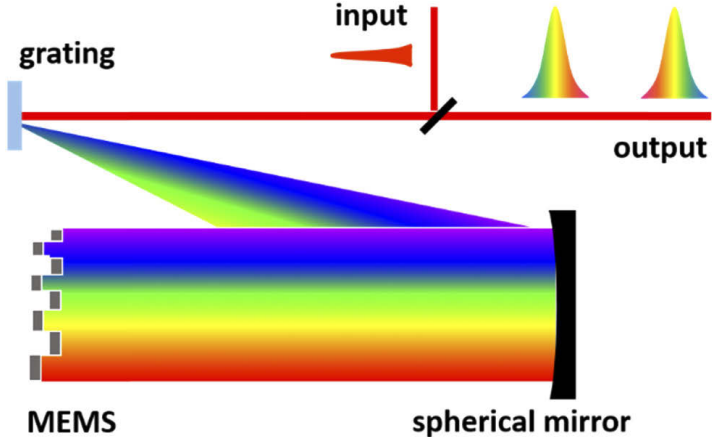For ultrafast optics, their precise dispersion control for pulse shaping is crucial for applications such as ultrafast spectroscopy, ultrafast imaging, precise delay control in a pump-probe experiment. Meanwhile, managing dispersion is vital for ultrashort, high peak power light sources to achieve few cycles or even single cycle pulses.
Dispersion pulses can be realized by using frequency dependent refractive index in material (e.g., glasses, gases, crystals). However, these techniques inevitably introduce the different orders of dispersion, which are more or less coupled that limit their applications. Are there any solutions to overcome the obstacles?
A research team led by Prof. Dr. FU Yuxi from Xi'an Institute of Optics and Precision Mechanics (XIOPM) of the Chinese Academy of Sciences (CAS) proposed precisely programmed pulse trains for impulsive stimulated Raman scattering (ISRS) experiments to greatly enhance the optical control of elementary molecular motion. The results were published in OPTICS EXPRESS.
 Schematic of the proposed pulse shaper. (Image by XIOPM)
Schematic of the proposed pulse shaper. (Image by XIOPM)
“Our investigation of the dispersed pulses generation with aperiodic binary spectral phase jump (ABSPJ) is inspired by a pulse-pair generation with periodic phase jump”, according to the researchers. It is presented by the numerical simulations that two dispersed pulses can be generated by ABSPJ of π. The dispersion of one pulse is opposite to the other and can be tuned freely with the engineering of the phase jump.
The generated dispersed pulse-pair is potential of great interest for various applications, such as two-dimensional spectroscopy, double pulses laser-wake field acceleration and chirp management in dual-chirped optical parametric amplification (DC-OPA) system to generate TW single-cycle mid-infrared (MIR) pulses.
Since no refreshment is demanded for each shot of pulse, such a pulse shaper can be used in optical systems at a much higher repetition rate compared to AOPDF. Furthermore, a pulse shaper configured as a MEMS located at the Fourier plane of a 4-f dispersion-free compressor is suggested and the implementation in a high repetition optical parametric chirped pulse amplification system with picosecond pump has been numerically studied. The simulations showed that MEMS of 900 pixels is enough to pre-compensate TOD of 200000 fs3 for a pulse of 20 fs.
The method is firstly proposed for investigating arbitrarily shape ultrafast pulses by ABSPJ.


